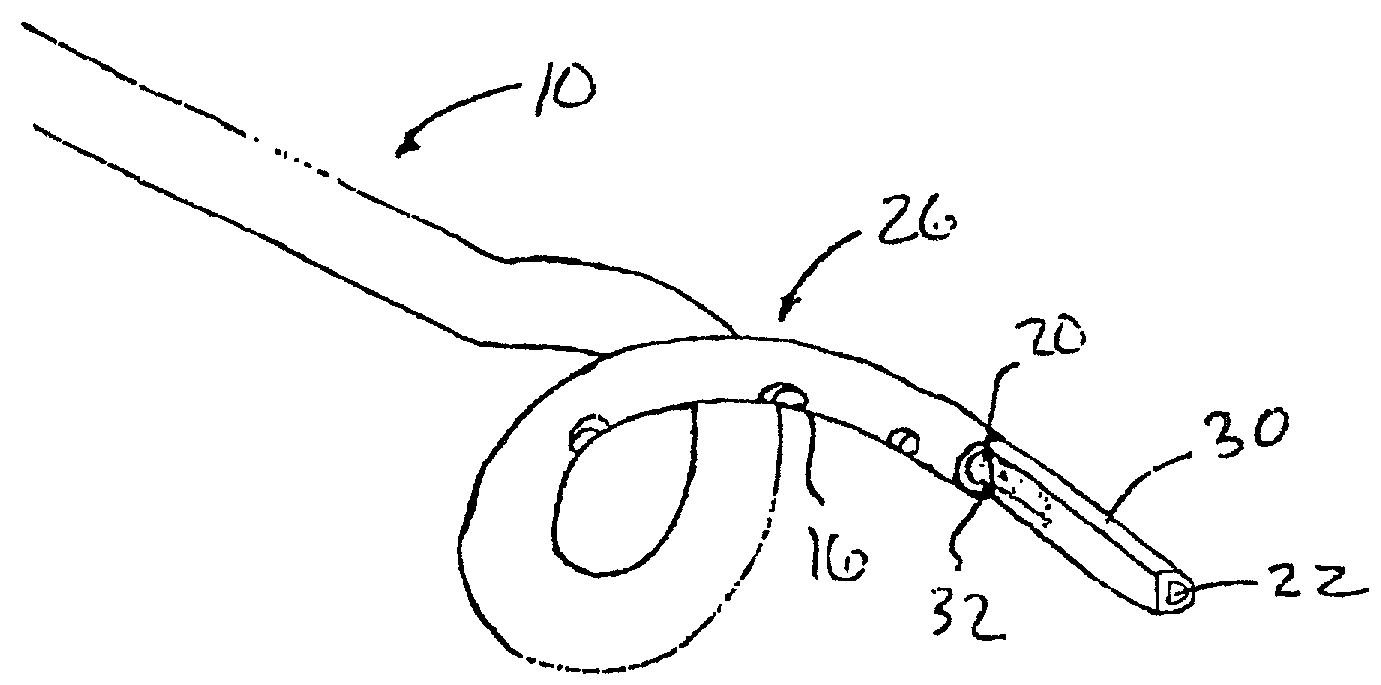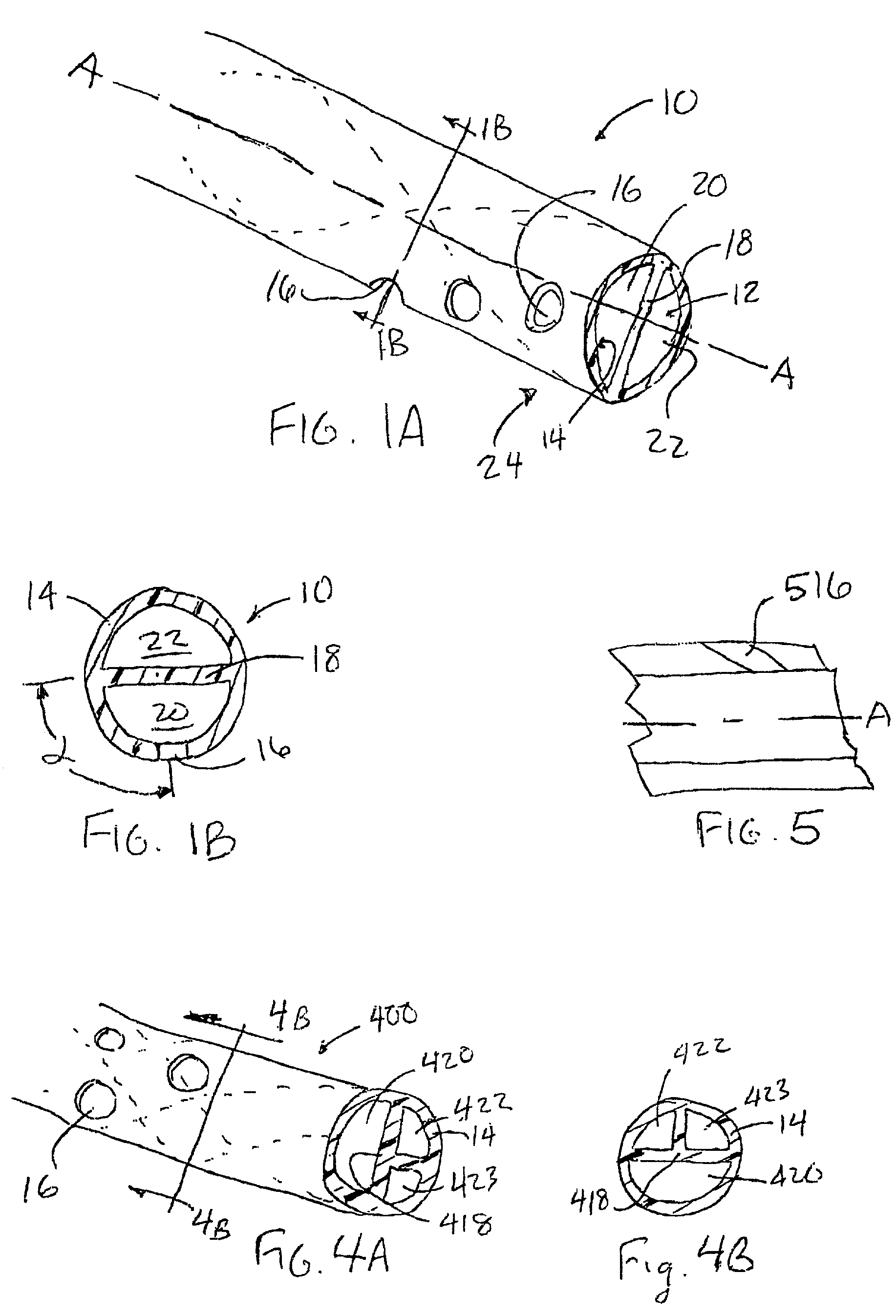Occlusion-resistant catheter
a catheter and occlusion technology, applied in the field of perfusion catheters, can solve the problems of insufficient spiral configuration to keep the flow into the opening from becoming occlusion, unnecessary discomfort for patients, and limited range of spiral pathways, etc., to achieve the effect of cleaning the blood and minimizing the occlusion of the openings
- Summary
- Abstract
- Description
- Claims
- Application Information
AI Technical Summary
Benefits of technology
Problems solved by technology
Method used
Image
Examples
Embodiment Construction
[0024]The invention will next be illustrated with reference to the figures wherein the same numbers indicate similar elements in all figures. Such figures are intended to be illustrative rather than limiting and are included herewith to facilitate the explanation of the apparatus of the present invention.
[0025]Referring now to FIGS. 1A-5, there are shown several embodiments of the invention. As shown in FIGS. 1A and 1B, catheter 10 comprises an elongated tube having an interior 12 defined by a sidewall 14 having a plurality of openings 16 formed in the sidewall, and a septum 18. Septum 18 divides interior 12 into a first lumen 20 and a second lumen 22. As shown by the dashed lines in FIG. 1A, the first lumen and second lumen form a double helix about one another as septum 18 twists about the common axis A of the catheter, as further illustrated by the cross section of FIG. 1B. FIG. 1B, a cross-section of catheter 10 taken a predetermined distance from the end 24 of the catheter show...
PUM
| Property | Measurement | Unit |
|---|---|---|
| Length | aaaaa | aaaaa |
| Luminous flux | aaaaa | aaaaa |
| Angle | aaaaa | aaaaa |
Abstract
Description
Claims
Application Information
 Login to View More
Login to View More - R&D
- Intellectual Property
- Life Sciences
- Materials
- Tech Scout
- Unparalleled Data Quality
- Higher Quality Content
- 60% Fewer Hallucinations
Browse by: Latest US Patents, China's latest patents, Technical Efficacy Thesaurus, Application Domain, Technology Topic, Popular Technical Reports.
© 2025 PatSnap. All rights reserved.Legal|Privacy policy|Modern Slavery Act Transparency Statement|Sitemap|About US| Contact US: help@patsnap.com



